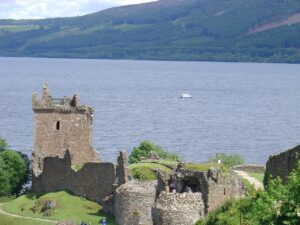Huge pumped storage hydro scheme proposed for Loch Ness
The geography surrounding Loch Ness makes it an ideal candidate for pumped storage hydro power generation and the £2bn scheme that Glen Earrach Energy (GEE) have just announced is one of a number looking to exploit that.
GEE submitted a scoping request to the Scottish Government in April and on Friday held the first community engagement event to discuss their plans with local people.

The first such power station on the Loch was opened as long ago as 1974 and planning permission has recently been granted to a scheme at Loch na Cathrach. In December an application was submitted for a project at Loch Kemp on the south side of Loch Ness, which drew calls for a moratorium on such schemes from the Ness District Salmon Fishery Board.
GEE are attempting to pre-empt any such concerns by emphasising the undeniably impressive scale of the project, which will be capable of delivering up to 30 gigawatt-hours of clean energy – enough to power over a million homes. They also say it will create 600 jobs, reduce the carbon footprint of the grid by 10% and save £2 billion in electricity grid running costs.
Pumped hydro works by using excess off-peak power to send water into a holding reservoir higher up. In this case that will be Loch Breac Dearga which sits nearly 500m above Loch Ness.
To generate electricity, the water is released and passes through turbines on the way down.
Because of this height difference, Roderick MacLeod, director of GEE, believes the Glen Earrach scheme would be the most efficient of its type in Europe: ‘In terms of size and in terms of power, it is significantly larger than any other PSH projects which are being proposed or exist on Loch Ness.
‘It is very close to Loch Ness and also has over 480m in vertical drop between the top and bottom reservoir, which means is that it is going to make the most efficient use of the water of Loch Ness compared to any existing or proposed PSH projects.
‘Our grid proximity to major wind farms also increases the potential efficiency of the project”.’
Some campaigners are worried about the cumulative effect of power stations pumping water out of Loch Ness. When the Loch Kemp scheme was proposed earlier this year, an environmental impact assessment suggested that there was the potential for them to reduce the level of Loch Ness by 73cm.
Regarding this, MacLeod says for each 1,000MWh of electricity stored, Loch Ness’s water level would change by about 1.4cm.
He adds: ‘We are fully aware this is a massive project which is going to come into the community. That is why we are engaging very seriously with the community at the beginning of this project.
‘We want to engage and have discussions with everyone to make sure the project is as good as it possibly can be, firstly by minimising the environmental impact and making sure it is as unobtrusive as possible.’

















